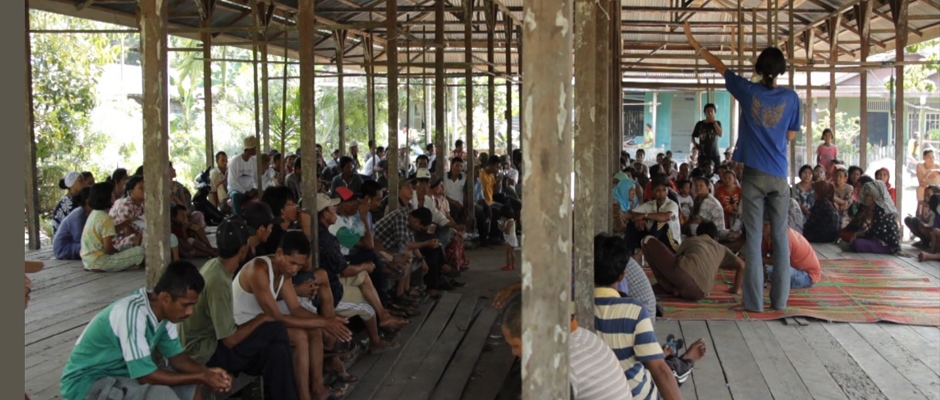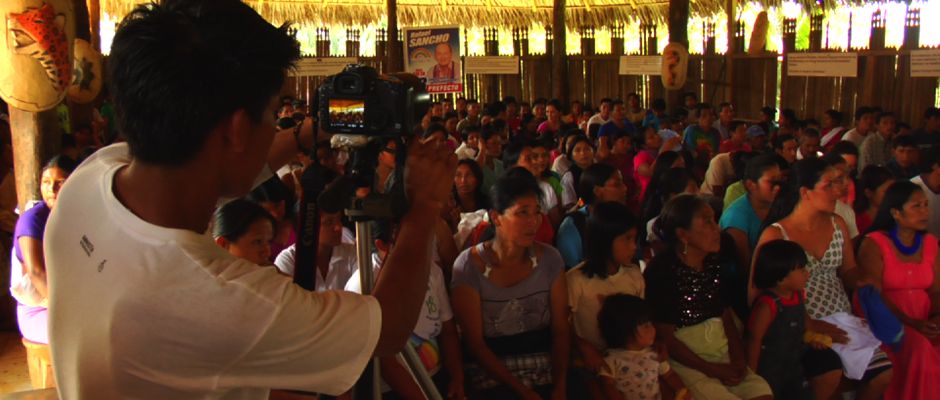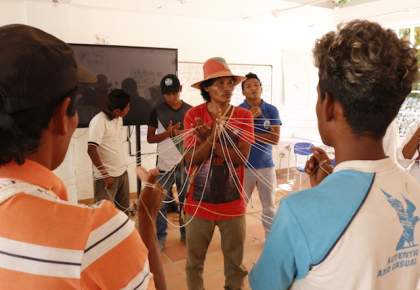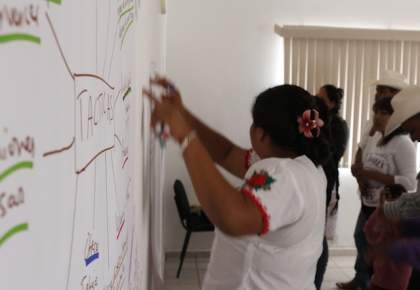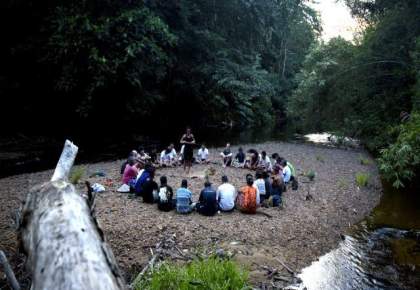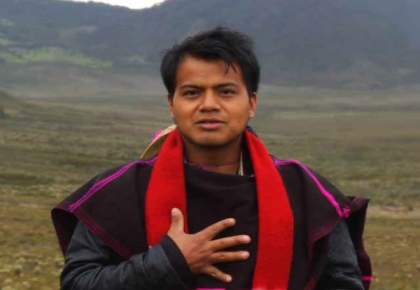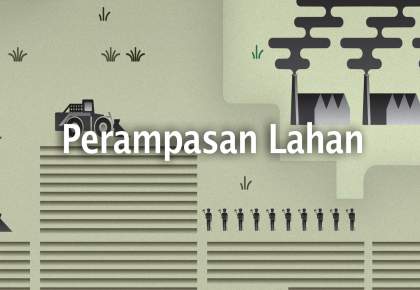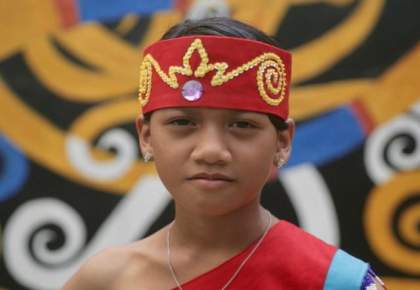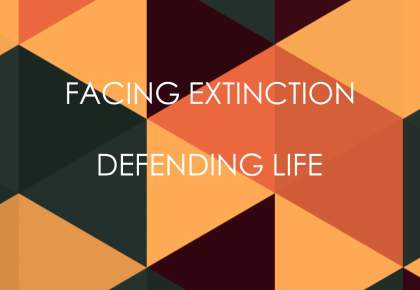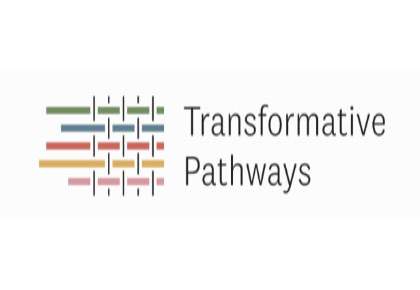Storytelling
-
We produce and co-ordinate the distribution of educational resources, particularly videos, for indigenous peoples. Resources are primarily based on community testimonies; they present complex issues in an accessible and engaging way; and support indigenous peoples right to free, prior and informed consent.
We have produced over 40 videos and 5 major video toolkits on oil palm, climate change, industrial tree plantations, REDD+, and land rights. 30,000 copies of our video toolkits have been distributed to communities in 20 countries.
We are keen for the resources we produce and the approaches we promote being shared widely. We design them to work as stand-alone resources but for optimum impact they are ideally accompanied by active facilitation.
We also facilitate partner-led dissemination across wide networks to reach thousands of communities. We train practitioners to use our resources in their movement-building work, building their capacity to facilitate communities to organise to protect their lands, cultures and forests.
We have also trained over 1,500 local facilitators, movement-builders and community organisers in hundreds of organisations in the use of media for empowerment, film-making, popular education, leadership and approaches to self-determined development.
We believe in the power of visual storytelling to critically educate, and inspire debate and action. Our approach to developing and distributing toolkits and resources is underpinned by community testimonies, taking great care in relation to permissions. This is particularly important for the audiences that we focus on, many of whom are illiterate or semi-literate and often lack basic access to information. We dub films instead of subtitling them for ease of community use. To allow all community members to participate, we encourage testimonies to be given in the language of choice of the interviewee including their local language or dialect. We never sell our footage. We use a Creative Commons license, without a right to re-edit in order to protect communities’ consent in the use of their testimonies. We support grassroots distribution by trained local facilitators. We prioritise dissemination to frontline communities where large-scale change is planned (such as plantations, mines, oil exploration, roads, airports, tourism, national park, REDD projects or others), but ideally has not yet taken place.
-
Samabue: The Seeds of Indigenous Education in Indonesia
Samabue: The Seeds of Indigenous Education in Indonesia
The seeds of indigenous education in Indonesia - Samabue Indigenous School was set up in 2016 in West Kalimantan. It runs as an after-school club to serve indigenous children who attend the mainstream government run school and focuses on giving children a rooting in their own traditional knowledge and culture. Teachers are indigenous volunteers and local elders who foster communication between the generations. (LifeMosaic 2019)
Misak Education: Decolonising the Mind
Misak Education: Decolonising the Mind
The Misak indigenous people, from the south of Colombia, experienced almost complete cultural, territorial and linguistic loss, before taking back their ancestral lands in the 1970s, going on to rejuvenate their culture, reclaim their traditions and strengthen their autonomy. Today 95% of Misak speak their mother tongue. Nine out of ten youth who leave the territory, return. How have the Misak done this? And what role has their own indigenous education system played? (LifeMosaic 2019)
PAMULAAN - Centre for Indigenous Peoples Education
PAMULAAN - Centre for Indigenous Peoples Education
Pamulaan is an indigenous university created for the indigenous youth of the Philippines. It offers culturally appropriate degree level courses, producing indigenous graduates with relevant knowledge and skills but still rooted in their own cultures. (LifeMosaic 2019)
TUGDAAN - An Indigenous High School
TUGDAAN - An Indigenous High School
The TUGDAAN Mangyan Center for Learning and Development is an educational institution dedicated to serve the 8 Mangyan tribes of Oriental and Occidental Mindoro, The Philippines. Tugdaan High School, for children aged 11-18, was set up in the community of Paitan in 1989 after many discussions with the elders who had reflected that they are being discriminated against and tricked by lowlanders and felt this was due to their education levels being very low. They developed their dream to educate their youth without compromising their deeply rooted cultural beliefs, knowledge and practices. (LifeMosaic 2019)
Benefits of Territory
Benefits of Territory
What are the benefits of secure tenure for indigenous peoples, for the environment and for wider society? This video is part of the 'Territories of Life' toolkit, a series of 10 short videos that share stories of resistance, resilience and hope with communities on the frontline of the global rush for land. The Territories of Life toolkit is being shared freely with thousands of communities around the world whose territories are central to their way of being.
Land Grabs
Land Grabs
What are land grabs? Why are they happening, and what are their impacts? Indigenous communities around the world are seeing their lands threatened by the extractive and agro-industries, by conservation schemes and by tourism developments. This video looks into the scale, drivers, and impacts of the global rush for land. In this video we hear from indigenous peoples from Asia, Latin America and Africa who have first hand experience of the impacts of land grabs.
Fever: trailer (English)
Fever: trailer (English)
Trailer for ‘Fever’, a 4-part climate change documentary based on the voices and experiences of indigenous peoples in the Philippines, Ecuador, Nicaragua, and Indonesia. What is climate change? How is it effecting indigenous peoples and their territories around the world? What are indigenous peoples doing about it? The films are primarily for use by indigenous and tribal communities and grassroots partners as tools for community empowerment. Other ways that the films are being used is at training's and workshops, festivals, in schools and universities and in government policy discussions. (LifeMosaic, 2010)
Fever (English)
Fever (English)
Part 1: Fever explains what climate change is and why it is so important to indigenous peoples. The film covers: what is climate change; what is carbon; what is the greenhouse effect? What are the underlying causes of climate change? What are the impacts of climate change? (LifeMosaic, 2010)
Fever: Impacts (English)
Fever: Impacts (English)
Part 2: Impacts shows how large-scale industries such as plantations, coal mining and oil extraction impact on indigenous peoples livelihoods and rights as well as contributing to global climate change. (LifeMosaic, 2010)
Women Champions of Buffalo River
Women Champions of Buffalo River
This video is about a powerful women-led movement for indigenous land rights, from Loliondo, Tanzania. Without the community’s consent a large part of their lands were occupied. When the women in the community realised that the efforts to defend their territory were failing, they decided to take matters into their own hands. The women used awareness-raising, protests and political pressure to lead a movement in defence of their territory.
Sarayaku Leadership: Wisdom of the Elders, Power of the Youth
Sarayaku Leadership: Wisdom of the Elders, Power of the Youth
Community members from Sarayaku in Ecuador discuss what leadership means to them, and how it is practised in their territory.
Back to the Village: Indigenous Education in Indonesia
Back to the Village: Indigenous Education in Indonesia
Indigenous educators from across Indonesia and the Philippines share their thoughts on the problems and solutions in education for indigenous youth. “The existing education system teaches ‘ilmu pergi’ - the science of leaving.” (Sarno Maulana, Pasawahan school, West Java). "It is important for us to start our own education - our indigenous education. So we are the ones who determine its methods, we are the ones who determine its contents, and all of this within our territory.” (Jhontoni Tarihoran, BPAN) (LifeMosaic)
Behind the Page - Part 1
Behind the Page - Part 1
Behind the Page (Di Balik Kertas) is a 2 part film about industrial timber plantations (HTI) in Indonesia. The film is designed to be used by local facilitators and communities whose lands are in or near existing HTI permit areas, or in areas where new permits for mills or HTI plantations will be allocated. The film is based on the voices of people from 8 communities in Papua, North Sumatra, Riau and Jambi, which have lost part or all of their ancestral land to HTI. How has this change impacted their community economies, their water, culture, food security and land rights? And how are they organising themselves to face these challenges? (LifeMosaic, 2012)
Community Organising in Plantations
Community Organising in Plantations
This is part 2 of a 2 part film about industrial timber plantations (HTI) in Indonesia. The film is designed to be used by local facilitators and communities whose lands are in or near existing HTI permit areas, or in areas where new permits for mills or HTI plantations will be allocated. This film looks at strategies and tactics that communities are using to defend their rights when facing Industrial Tree Plantations. There are many examples where communities have been successful in getting what they want for the future of their land. Some communities may want to negotiate with the company specifying which areas of community land the company can use, and which areas it must leave alone. Other communties may chose to refuse mills or plantations on their lands altogether, and others may wish to regain their lands from a HTI concession that is already established. For any of these situations it is essential that a community is well organised, well informed and united in order to make wise decisions and effective strategies for their futures. (LifeMosaic, 2012)
Life Plan
Life Plan
The Misak are an indigenous people whose territories are located in Cauca, Colombia. As with many indigenous peoples in Latin America, the Misak lost large parts of their territory during colonial rule. In the 1970s, they started a process of land reclamation and were eventually successful in gaining formal land rights recognition. Since then the Misak developed Plan de Vida as a tool for self-determined development to ensure their gains would be preserved for future generations.
Fever: Organisation (English)
Fever: Organisation (English)
Part 3: Organisation gives examples of organisational tools and strategies used by indigenous peoples to protect their cultures, territories and rights. The film covers: awareness raising; organisational tools; networks and communication; petitions; legal cases and international law; unity, life plan; spirituality; movements. (LifeMosaic, 2010)
Fever: Resilience (English)
Fever: Resilience (English)
Resilience is the ability to cope and recover from abrupt change. Indigenous peoples who are organised, confident to adjust their systems to changing circumstances, while maintaining their identity strong, will be better able to withstand shocks caused by climate change. The film shows 5 examples of this: cultural resilience; traditional forest management; strengthening customary law to live within the limits of the environment; maintaining seed diversity; and adapting traditional systems to cope with water scarcity. (LifeMosaic, 2010)
Progress or Problem? Oil Palm Plantation (English Subtitles)
Progress or Problem? Oil Palm Plantation (English Subtitles)
Indonesia is the biggest producer of palm oil in the world. This film is based on the voices of indigenous peoples in Indonesia who have directly experienced the impacts of oil palm plantations on the land that they have lived and worked on for generations. The film is one-hour educational film made with 20 indigenous communities in Indonesia. It aims to help community members in oil palm plantations or plantation expansion areas to make informed decisions on the future uses of their ancestral lands. Part 1 focuses on the impacts of oil palm and contains an introduction, and chapters on local economics, farming systems, water, culture, land and conflict. (LifeMosaic, 2007)
Organising your Community Oil Palm Plantations (English Subtitles)
Organising your Community Oil Palm Plantations (English Subtitles)
A film exploring how indigenous and local communities across Indonesia and organising themselves to stand up for their rights and self determined visions of the future, particularly when their lands and cultures are threatened by large-scale oil palm plantation development. Indonesia is the biggest producer of palm oil in the world. This film is based on the voices of indigenous peoples in Indonesia who have directly experienced the impacts of oil palm plantations on the land that they have lived and worked on for generations. The film is one-hour educational film made with 20 indigenous communities in Indonesia. It aims to help community members in oil palm plantations or plantation expansion areas to make informed decisions on the future uses of their ancestral lands. Part 2 contains chapters on Community-Led Alternatives and Community Tactics for accepting or refusing oil palm. (LifeMosaic, 2007)
Palmed Off (English)
Palmed Off (English)
Palmed Off is based on testimonies from indigenous peoples affected by oil palm plantations in Indonesia and explores the impacts of oil palm plantations on their local economies, on the local environment, on their culture and on the prospects for the future generations. (LifeMosaic, 2007)
Communications
Communications
This video looks at the ways three communities in Indonesia, Tanzania and Ecuador are using radio, internet, mainstream national and international media and video to bring the stories of their struggles to both the wider world and their local areas.
Using the Law
Using the Law
Learn from indigenous communities that have used national and international law to defend their rights. This video looks at three legal cases in Indonesia, Tanzania and Paraguay using national, regional and international law. It also looks at the pros and cons of going to court. This video is part of the 'Territories of Life' series, a video toolkit for indigenous peoples about land and rights.
Company Tactics
Company Tactics
'Company Tactics' describes the tactics that companies use to convince communities to accept and support their projects, and shows that these tactics are used across continents and industries. When communities are aware of these tactics and are prepared for how to counter them, they are more likely to be able to maintain their position in dealing with land decisions concerning outside developments. The video is based on the experiences of communities in Cameroon, Indonesia and Paraguay. It can be screened in communities where plantations, mining or large scale developments are happening or could happen in future.
Bugta
Bugta
Bugta is a message from the Talaandig tribe, Mindanao, Philippines for COP15. The Talaandig community will hold a ritual during the Copenhagen summit, to pray for the leaders to protect the earth, and guarantee justice for all beings. (LifeMosaic, 2009)
Eyes on the Kampar Peninsula
Eyes on the Kampar Peninsula
The Kampar Peninsula is 700,000 hectares of peatland up to 15 metres deep, on the island of Sumatra, Indonesia. The peat contains more than 2 billion tonnes of carbon. 400,000 hectares of forest remain standing, 300,000 hectares have been converted to oil palm and pulp and paper plantations. All eyes are on the Kampar: loggers, carbon traders, and plantation companies including the giant RAPP pulpwood planter. But where does this leave the Akit and Melayu indigenous peoples who inhabit the peninsula? This film tells the human story behind one of the biggest carbon stores in the world. (LifeMosaic, 2009)
Don’t Pulp Pandumaan-Sipituhuta: A David and Goliath Tale
Don’t Pulp Pandumaan-Sipituhuta: A David and Goliath Tale
The pulp and paper industry is growing all over Indonesia. The Toba Pulp Lestari (TPL) company, is expanding its eucalyptus plantations on the lands of the indigenous communities of Pandumaan-Sipituhuta in North Sumatra. The communities have lived and worked on their lands for 13 generations. They are peacefully resisting to defend their forests and their livelihoods. But their defence of their lands comes at a heavy cost as they are criminalised. Please stand together with this community at the front-line of the global land grab that is putting profit ahead of rights. (Pandumaan-Sipituhuta / KSPPM / LifeMosaic, 2013)
Don’t Pulp Pandumaan-Sipituhuta: An Update
Don’t Pulp Pandumaan-Sipituhuta: An Update
The pulp and paper industry is growing all over Indonesia. The Toba Pulp Lestari (TPL) company, is expanding its eucalyptus plantations on the lands of the indigenous communities of Pandumaan-Sipituhuta in North Sumatra. The communities have lived and worked on their lands for 13 generations. They are peacefully resisting to defend their forests and their livelihoods. But their defence of their lands comes at a heavy cost as they are criminalised. Please stand together with this community at the front-line of the global land grab that is putting profit ahead of rights. (Pandumaan-Sipituhuta / KSPPM / LifeMosaic, 2013)
REDD: A New Animal in the Forest (English)
REDD: A New Animal in the Forest (English)
REDD (Reducing Emissions from Deforestation and Forest Degradation), is a climate change mitigation measure that seeks to reduce GHG emissions by preventing or reducing forest loss and forest degradation. Indigenous peoples living in these forests have urgent messages about REDD, its potential opportunities, and the risks of failure if indigenous peoples rights, and their traditional knowledge and practices are not recognised. (LifeMosaic, 2009)
-
Storytelling News

New Baka and Bagyeli language films released
Several of LifeMosaic's films from the Territories of Life series have been dubbed into 2 indigenous languages for the Baka and Bagyeli peoples from Cameroon.

Territories of Life workshops with the Shawi people
In late February 2017 LifeMosaic and Peru Equidad facilitated a three-day workshop for Shawi community leaders in the village San Antonio, Loreto department, Peru.
LifeMosaic-CINEP workshop with Wiwa youth in Colombia
LifeMosaic and CINEP teamed up to bring our Territories of Life toolkit and workshops to youth from three Wiwa communities in the Sierra Nevada de Santa Marta.
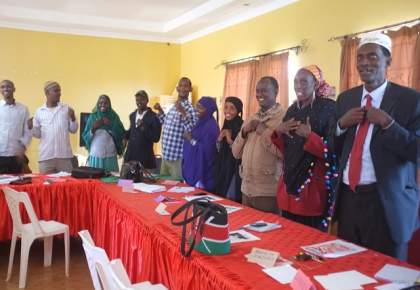
Teritories of Life Launch, Kenya
In June, LifeMosaic brought the Territories of Life toolkit to Kenya, in partnership with the Kivulini Trust and the Waso Trustland Project.
Territories of Life launched in Mexico
In February, LifeMosaic brought the Territories of Life toolkit to Yaqui and Rarámuri communities of North West Mexico, in partnership with the Christensen Foundation, La Marabunta Filmadora and Siné-Comunarr.

Territories of Life - Longhouse Screenings
Territories of Life is being screened as part of a three-week residential training with 27 young indigenous leaders from across Indonesia. The training, organised by AMAN / BPAN and LifeMosaic, is being held in a remote Dayak traditional longhouse in Kapuas Hulu, West Kalimantan, Indonesia
-
Documents and Downloads
Territories of Life - Facilitators Guide
This booklet is for community facilitators who are using the Territories of Life Video series. The booklet covers information about each video in the series as well as tips on hosting screenings, discussions and action planning sessions with communities.
Fever - Facilitators Guide
This guide is for community leaders and facilitators who are using Fever the video series about indigenous peoples and climate change. The guide covers all 4 videos and offers example discussion questions, additional facts and resources and examples of follow up planning, action and activities to be carried out with communities.
Chapter 1: Context and Challenges (Grassroots Leadership and Popular Education in Indonesia)
LifeMosaic and The Samdhana Institute are serialising a new book: Grassroots Leadership and Popular Education in Indonesia. Chapter 1: Context and Challenges provides an overview of the unprecedented challenges faced by communities, social movements and ecosystems in Indonesia and around the world. These include: a global rush for increasingly scarce resources; the risks of breaching multiple planetary boundaries which have enabled human life on Earth; increasing inequality; and an enormous loss of biological and cultural diversity; an Indonesian context where progress for community rights is being held back by large-scale land acquisition and growing agrarian conflict; top-down models for social or environmental transformation, critiqued by interviewees and workshop participants in the course of this research; the influence of the doctrine that states that There is No Alternative to neo-liberal economics and globalisation. Yet this chapter ends on a positive note, showing how, despite such challenges, there are alternatives that are being created around the world. (The Samdhana Institute / LifeMosaic, 2015)
- Chapter 1: Context and Challenges (Grassroots Leadership and Popular Education in Indonesia) (pdf - 475 KB)
- Grassroots Leadership and Popular Education in Indonesia - Introduction and Summary (pdf - 1 MB)
Grassroots Leadership and Popular Education in Indonesia: Introduction and Summary
Grassroots Leadership and Popular Education in Indonesia is a new publication by LifeMosaic and The Samdhana Institute. The book sets out to analyse and recommend ways to support grassroots leadership development and popular education in order to strengthen movements for social and environmental change – in Indonesia and around the world. The book is for grassroots leaders, activists, educators and movement builders in Indonesia and beyond, for all those participating in systemic change towards a more equitable and sustainable future, with the hope that in these pages there is a spark that gives you energy on your journey. Please read this Introduction and Summary, the first chapter of the book to be serialised. (The Samdhana Institute / LifeMosaic, 2015)
- Grassroots Leadership and Popular Education in Indonesia: Introduction and Summary (pdf - 1 MB)
- Chapter 1: Context and Challenges (pdf - 475 KB)
Losing Ground
The human rights impacts of oil palm expansion in Indonesia. This report shows how Indonesian government policies and palm oil industry practices are harming the rights of indigenous peoples and local communities. (Sawit Watch / Friends of the Earth / LifeMosaic, 2008)
Sungai Utik Declaration
The Sungai Utik Declaration is a statement of intent from more than 20 indigenous young people from the Philippines and Indonesia responding to the call from their ancestors and their territories.
-



